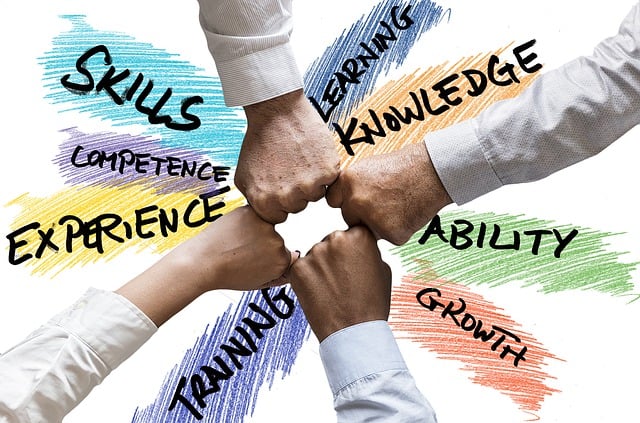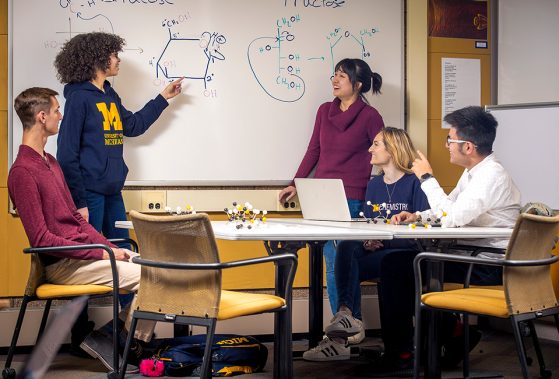
In today's fast-paced and interconnected world, the ability to learn and collaborate effectively in groups has become increasingly essential.
To help you unlock the full potential of group learning, this article presents 11 unbeatable strategies that will maximize your learning outcomes.
From collaborative education to learning networks, each strategy is carefully designed to promote engagement, foster creativity, and drive meaningful interactions.
Discover how these practical approaches can empower you to harness the power of collective intelligence and achieve unprecedented levels of knowledge acquisition and retention.
Collaborative Education
Collaborative education offers numerous benefits for students, fostering a dynamic learning environment that promotes critical thinking and teamwork. Through collaborative projects, students have the opportunity to engage with their peers, exchange ideas, and develop a deeper understanding of the subject matter. This approach encourages active participation and allows students to take ownership of their learning.
Moreover, collaborative education enhances group dynamics by teaching students how to effectively communicate, resolve conflicts, and work together towards a common goal. These skills are not only essential for academic success but also for future professional endeavors. By engaging in collaborative learning experiences, students are better prepared to navigate the complexities of the real world, where effective teamwork and collaboration are highly valued.
Ultimately, collaborative education empowers students with the necessary skills and knowledge to thrive in a rapidly changing global society.

Learning Communities
Learning communities provide a beneficial framework for students to collaborate and engage in shared educational experiences. These communities foster an environment where individuals can come together to learn, grow, and support one another.
Here are four key benefits of learning communities:
- Enhanced collaboration: Learning communities encourage students to work together, promoting collaborative problem-solving and the exchange of ideas. This collaborative approach allows for a deeper understanding of the subject matter and encourages critical thinking.
- Increased engagement: By participating in a learning community, students become more engaged in their own learning. They have the opportunity to explore topics of interest, share their perspectives, and actively contribute to the learning process.
- Social support: Learning communities provide a sense of belonging and support. Students can connect with peers who share similar interests and goals, creating a supportive network that enhances their learning experience.
- Holistic development: Learning communities foster not only academic growth but also personal and professional development. Through collaboration and shared experiences, students develop valuable skills such as communication, teamwork, and leadership.
Peer Instruction
Peer Instruction is a powerful strategy that promotes active engagement and effective group discussions within a learning community. By encouraging students to actively participate in their own learning process, Peer Instruction creates an environment where students learn from each other through thoughtful discussions and peer feedback.
This collaborative approach not only enhances learning outcomes but also cultivates important skills such as critical thinking, communication, and problem-solving.
Active Peer Engagement
To optimize group learning, an effective strategy involves actively engaging peers through the implementation of peer instruction. Active participation is crucial in group dynamics as it encourages collaboration, fosters critical thinking, and enhances problem-solving skills.
Here are four key benefits of active peer engagement:
- Enhanced comprehension: Peer instruction allows students to explain concepts to their peers, reinforcing their own understanding in the process.
- Increased motivation: When students actively participate in discussions and share their ideas, they become more invested in the learning experience.
- Diverse perspectives: Peer instruction encourages students to share their unique viewpoints, leading to a richer and more comprehensive understanding of the topic.
- Improved communication skills: Through peer instruction, students learn how to articulate their thoughts, listen actively, and engage in meaningful conversations.
Effective Group Discussions
Implementing effective group discussions through the use of peer instruction is a key strategy to optimize group learning.

Group brainstorming and interactive discussions can enhance the learning experience by encouraging active participation, critical thinking, and collaboration among group members.
During group discussions, students have the opportunity to share their ideas, ask questions, and engage in meaningful conversations with their peers. This promotes a deeper understanding of the topic and allows students to learn from each other's perspectives and experiences.
Additionally, peer instruction facilitates the development of important skills such as communication, teamwork, and problem-solving.
To ensure the success of group discussions, it is important to establish clear goals, provide guidelines for participation, and create a supportive and inclusive learning environment.
Enhanced Learning Outcomes
Through the use of peer instruction, group learning can be enhanced to achieve optimal learning outcomes.
Peer instruction involves students working together in small groups to actively participate in the learning process. This engagement technique encourages students to discuss concepts, ask questions, and provide explanations to their peers. By doing so, they not only reinforce their own understanding but also gain new insights from their classmates.
Peer instruction also fosters a feedback loop, where students receive immediate feedback from their peers and can clarify any misconceptions. This active learning approach promotes critical thinking, problem-solving skills, and deeper understanding of the subject matter.

It empowers students to take ownership of their learning, encourages collaboration, and creates a supportive learning environment.
Learning Partnerships
Effective collaboration is achieved through the establishment of learning partnerships. Learning partnerships refer to the formation of small groups within a larger group setting, where individuals work together to achieve common learning goals. These partnerships provide an opportunity for cooperative problem solving, as members contribute their unique perspectives and skills to tackle challenges together.
Learning partnerships offer several advantages. Firstly, they promote active engagement and participation among group members, as they are encouraged to communicate and collaborate with one another. This fosters a sense of shared responsibility and accountability, leading to a more efficient and effective learning process. Additionally, learning partnerships enhance critical thinking and problem-solving skills, as individuals are exposed to different viewpoints and approaches. This allows for a deeper understanding of the subject matter and encourages creative thinking and innovation.
To establish successful learning partnerships, it is important to create a supportive and inclusive environment where every member feels valued and respected. Clear communication and effective teamwork are essential for cooperative problem-solving, and regular reflection and feedback can further enhance the learning experience. By fostering learning partnerships, groups can maximize their collective potential and achieve outstanding learning outcomes.
Mutual Learning
How can learning partnerships facilitate mutual learning within a group setting?
Mutual learning is a collaborative process where individuals in a group support each other and exchange knowledge to enhance their collective understanding. Learning partnerships play a crucial role in fostering mutual learning within a group.
Here are four key ways in which learning partnerships facilitate mutual learning:

- Mutual support: Learning partnerships encourage group members to provide support and encouragement to each other, creating a safe and inclusive learning environment.
- Knowledge exchange: Through learning partnerships, group members can share their unique expertise and experiences, enabling a diverse range of perspectives and insights.
- Active listening: Learning partnerships promote active listening, allowing individuals to understand and appreciate different viewpoints, leading to deeper learning and understanding.
- Constructive feedback: Learning partnerships provide opportunities for constructive feedback, helping group members identify areas for improvement and grow collectively.
Synergistic Learning
To what extent does synergistic learning contribute to the overall effectiveness of group learning?
Synergistic learning, also known as collaborative exploration, plays a crucial role in maximizing the effectiveness of group learning. It involves the process of individuals coming together to share their knowledge, skills, and perspectives, leading to a collective understanding that is greater than the sum of its parts.
Synergistic exploration encourages active engagement, critical thinking, and problem-solving, as individuals collaborate and build upon each other's ideas. This approach fosters a sense of ownership and accountability within the group, as everyone contributes to the learning experience.
Shared Knowledge
Through the sharing of knowledge, group learning can be maximized and enhanced. Collaborative knowledge sharing allows individuals to pool their expertise, experiences, and perspectives, creating a collective learning experience that is rich and diverse.
Here are four key benefits of shared knowledge in group learning:
- Faster problem-solving: When knowledge is shared, different team members can contribute their unique insights, leading to quicker and more effective problem-solving. The collective intelligence of the group can uncover solutions that may not have been apparent to individuals working alone.
- Deeper understanding: By sharing their knowledge, group members can deepen their understanding of a topic. Through discussions and debates, different viewpoints can be explored, challenging assumptions and encouraging critical thinking.
- Increased creativity: Shared knowledge sparks creativity by exposing individuals to new ideas and perspectives. The exchange of diverse knowledge can inspire innovative thinking and encourage outside-the-box solutions.
- Building a learning culture: When knowledge is shared openly and freely, it fosters a culture of continuous learning within the group. This promotes a sense of collaboration, trust, and support, where individuals feel empowered to contribute and learn from one another.
Cooperative Learning
Cooperative learning is a powerful approach to maximize group learning that offers numerous benefits. By collaborating with others, students can gain a deeper understanding of the subject matter through shared knowledge and diverse perspectives.
Effective group communication plays a crucial role in fostering a positive learning environment, allowing for the exchange of ideas and the development of critical thinking skills.

Benefits of Collaboration
Collaborative learning offers numerous advantages for maximizing group learning outcomes. By engaging in collaborative projects, individuals can tap into the collective knowledge and skills of the group, leading to a deeper understanding of the subject matter.
Here are four key benefits of collaboration in cooperative learning:
- Enhanced problem-solving skills: Collaborating with others allows individuals to approach problems from different perspectives, fostering creativity and critical thinking.
- Improved communication skills: Working in a team setting requires effective communication and active listening, helping individuals develop their interpersonal skills.
- Increased motivation and engagement: Collaborative learning promotes a sense of shared responsibility and accountability, motivating individuals to actively participate and contribute to the group's success.
- Enhanced retention and transfer of knowledge: Through collaborative discussions and interactions, individuals can reinforce their understanding of concepts and apply them in real-world situations.
Effective Group Communication
By fostering effective communication within a group, individuals can greatly enhance their cooperative learning experience. Effective group communication is essential for collaborative decision making and optimizing group dynamics.
When communication flows smoothly, ideas are shared, conflicts are resolved, and decisions are made collectively, leading to a more productive and cohesive group.
To ensure effective communication, it is important to establish clear goals and objectives, actively listen to others, encourage open and respectful dialogue, and provide constructive feedback. Additionally, using tools and technologies that facilitate communication, such as online collaboration platforms or video conferencing, can further enhance group communication and collaboration.
Team-Based Learning
Implementing a structured approach to group learning, team-based learning fosters active engagement and shared responsibility among participants. This method is particularly effective for team-based projects, as it allows individuals to collaborate and leverage each other's strengths to achieve common goals.
Here are some key benefits of team-based learning:

- Enhanced group dynamics: By working together in a structured environment, team members develop strong interpersonal skills, such as effective communication, conflict resolution, and teamwork.
- Increased accountability: Through team-based learning, participants are accountable not only to themselves but also to their teammates. This promotes a sense of responsibility and ensures that everyone actively contributes to the group's success.
- Diverse perspectives: Team-based learning brings together individuals from different backgrounds, experiences, and perspectives. This diversity enriches the learning process by offering unique insights and challenging assumptions.
- Improved problem-solving skills: Collaborative learning encourages critical thinking and problem-solving skills. Team members can brainstorm ideas, analyze complex issues, and collectively find innovative solutions.
Collaborative Problem Solving
Collaborative problem solving is an essential skill in today's complex and interconnected world. When individuals come together to solve problems as a group, they can leverage their diverse perspectives, knowledge, and skills to generate innovative solutions.
Effective group problem-solving involves active listening, open communication, and a shared commitment to finding the best possible outcome. By collaborating, teams can not only solve problems more efficiently but also foster a sense of camaraderie and enhance their collective learning experience.
Effective Group Problem-Solving
In the realm of group learning, the application of effective problem-solving techniques plays a crucial role in fostering collaboration and achieving optimal outcomes.
When it comes to effective group problem-solving, two key strategies come to mind: group brainstorming and collective decision making.
Group brainstorming involves bringing together the diverse perspectives and ideas of group members to generate creative solutions. By encouraging open and non-judgmental discussion, this technique allows for the exploration of different possibilities and the identification of innovative solutions.
On the other hand, collective decision making involves involving all group members in the decision-making process. This approach not only promotes a sense of ownership and engagement but also ensures that decisions are made collectively, taking into account the input and expertise of everyone involved.
Benefits of Collaboration
By fostering collaboration and leveraging the collective expertise of group members, teams can unlock the full potential of collaborative problem-solving.

One of the key benefits of collaboration is the ability to tackle complex challenges through cooperative projects. When individuals with diverse perspectives and skills come together, they can generate innovative solutions that may not have been possible in isolation.
Collaboration also enhances group dynamics by promoting effective communication, trust, and mutual respect among team members. It encourages active participation, fosters a sense of belonging, and creates a supportive environment where everyone feels valued and heard.
Additionally, collaboration allows for the sharing of knowledge and expertise, which can lead to accelerated learning and personal growth for individuals within the group.
Learning Networks
Learning networks provide an interconnected framework for knowledge exchange and collaborative learning among individuals. In today's fast-paced and ever-changing world, learning networks have become essential for personal and professional growth.
Here are four reasons why learning networks are valuable for group dynamics:
- Enhanced Collaboration: Learning networks encourage individuals to work together, fostering a collaborative environment where ideas are freely shared and built upon.
- Diverse Perspectives: By connecting with a diverse network of individuals, learning networks offer a wide range of perspectives and expertise, enriching the learning experience.
- Continuous Learning: Learning networks provide access to a wealth of resources, enabling individuals to stay updated with the latest knowledge and trends in their respective fields.
- Supportive Community: Learning networks create a supportive community where individuals can seek advice, share challenges, and celebrate successes, fostering a sense of belonging and motivation.
Frequently Asked Questions
How Can Group Learning Contribute to Individual Academic Success?
Group learning contributes to individual academic success by fostering individual motivation through collaborative problem-solving and peer support. Additionally, the impact of group dynamics, such as diverse perspectives and shared accountability, enhances learning outcomes and encourages personal growth.
What Are the Potential Challenges or Drawbacks of Collaborative Education?
Potential drawbacks and challenges of collaborative education include a lack of individual accountability and unequal participation. These factors can hinder the effectiveness of group learning and prevent students from fully benefiting from the experience.

Forming learning communities outside of traditional educational settings can be achieved through online platforms that facilitate collaboration and knowledge sharing. These online learning communities provide individuals with the freedom to connect, learn, and grow together, regardless of geographical limitations.
What Strategies Can Be Used to Ensure Effective Peer Instruction?
Active engagement and effective feedback are essential strategies for ensuring effective peer instruction. By actively involving students in the learning process and providing timely and constructive feedback, group learning can be maximized.
How Can Learning Partnerships Be Established and Maintained in a Virtual Learning Environment?
Establishing accountability and building trust are essential in maintaining learning partnerships in a virtual environment. By setting clear expectations, fostering open communication, and promoting collaboration, participants can maximize group learning and achieve their educational goals effectively.
 Family Craft ProjectsHome ImprovementCooking and BakingReuse and RecycleDIY GiftsEco-Friendly ProjectsDIY Home SolutionsSeasonal ActivitiesFun and GamesLearn TogetherPrivacy PolicyTerms And Conditions
Family Craft ProjectsHome ImprovementCooking and BakingReuse and RecycleDIY GiftsEco-Friendly ProjectsDIY Home SolutionsSeasonal ActivitiesFun and GamesLearn TogetherPrivacy PolicyTerms And Conditions
